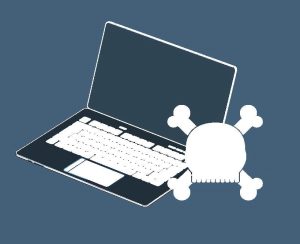5 Ways Cybercriminals Are Weaponizing Artificial Intelligence
Recent years have seen artificial intelligence (AI) surge in popularity among both businesses and individuals. Therefore, be on the lookout for cybercriminals weaponizing AI. Applications of this technology are widespread, but some of the most common include computer vision solutions, natural language processing systems, and predictive and prescriptive analytics engines. Although AI technology can certainly offer benefits in the realm of cybersecurity, it also has the potential to be weaponized by cybercriminals. As such, it’s crucial for businesses to understand the cyber risks associated with this technology and implement strategies to minimize these concerns. Here are five ways cybercriminals are leveraging AI technology and tips to help businesses safeguard themselves against its weaponization.

1. Creating and Distributing Malware
In the past, only the most sophisticated cybercriminals were capable of writing harmful code and deploying malware attacks. However, AI chatbots are now able to generate illicit code in a matter of seconds, permitting cybercriminals with varying levels of technical expertise to launch malware attacks with ease. In addition to writing harmful code, some AI tools can generate deceptive videos claiming to be tutorials on downloading certain versions of popular software that distribute malware to targets’ devices when they view this content.

2. Cracking Credentials
Many cybercriminals rely on brute-force techniques to reveal targets’ passwords and steal their credentials to then utilize their accounts for fraudulent purposes. Yet, these techniques may vary in effectiveness and efficiency. By leveraging AI technology, cybercriminals can bolster their password-cracking success rates, uncovering targets’ credentials at record speeds.

3. Deploying Social Engineering Scams
Social engineering consists of cybercriminals using fraudulent forms of communication (e.g., emails, texts and phone calls) to trick targets into unknowingly sharing sensitive information or downloading harmful software. Unfortunately, AI technology could cause these scams to become increasingly common by giving cybercriminals the ability to formulate persuasive phishing messages with minimal effort. It could also clean up errors in human-produced copy to make it appear more convincing.

4. Identifying Digital Vulnerabilites
When hacking into targets’ networks or systems, cybercriminals usually look for software vulnerabilities they can exploit, such as unpatched code or outdated security programs. While various tools can help identify these vulnerabilities, AI technology could permit cybercriminals to detect a wider range of software flaws, thus providing additional avenues and entry points for launching attacks.

5. Reviewing Stolen Data
Upon stealing sensitive information and confidential records from targets, cybercriminals generally have to sift through this data to determine their next steps—whether it’s selling this information on the dark web, posting it publicly or demanding a ransom payment in exchange for restoration. This can be a tedious process, especially with larger databases. With AI technology, cybercriminals can analyze this data much faster, allowing them to make quick decisions and speed up the total time it takes to execute their attacks. In turn, targets will have less time to identify and defend against attacks.

Protecting Against Weaponized AI Technology
Looking ahead, AI technology will likely contribute to rising cyberattack frequency and severity. By staying informed on the latest AI-related developments and taking steps to protect against its weaponization, businesses can maintain secure operations and reduce associated cyberthreats. Key safeguards for businesses to consider include adopting workplace policies that promote proper cyber hygiene, implementing automated threat detection technology to engage in continuous network monitoring, creating detailed cyber incident response plans and purchasing ample cyber coverage.
Cybercriminals are Weaponizing AI – We Can Help
Above all, it’s important for businesses to understand that they don’t need to navigate this evolving cyber risk landscape alone. Trusted insurance professionals can provide much-needed guidance and coverage solutions.
Contact TIG today for further resources.
Follow us on our TIG Advisors blogs


